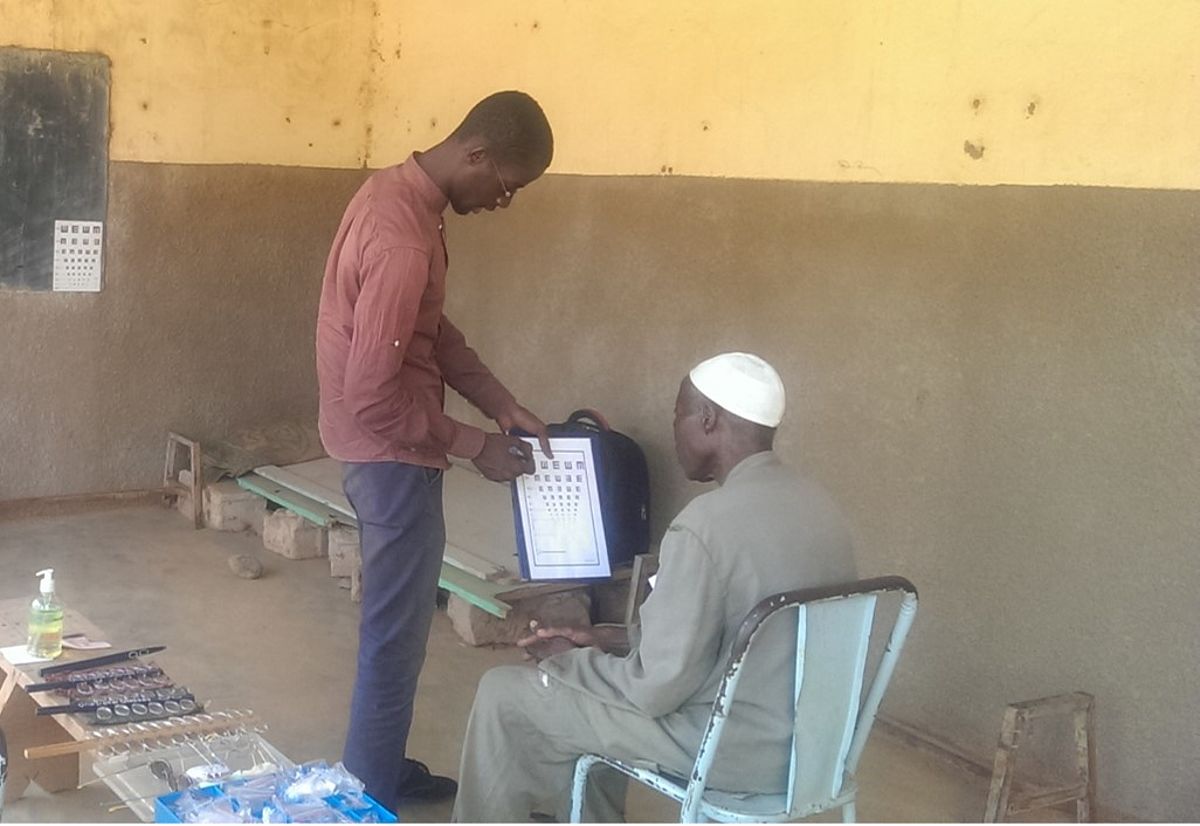Recent estimates point to a large undersupply of eyeglasses in developing countries, causing potentially sizable productivity losses. The World Economic Forum estimates that 2.5 billion – one in three people worldwide – are in need of eyeglasses. At 80%, the largest share of those in need live in developing countries and mainly in rural areas. Poor eyesight is an economic factor that exacerbates inequality and poverty.
OneDollarGlasses offers a solution: glasses that consist of a lightweight, flexible spring steel frame and prefab lenses and can be locally manufactured with simple bending machines. The cost of the material amounts to approximately 1 US dollar (hence the name). Still, sales are sagging.
In a recent study we analysed the reasons for this using a willingness-to-pay experiment. Our study was conducted in 21 villages located in the municipality of Kaya in the north central region of Burkina Faso, one of the poorest countries in the world. At 8.60 US dollars per pair, we found that the OneDollarGlasses are still too expensive for people in highly resource-constrained settings. These eyeglasses will have to be heavily subsidised to reach high levels of coverage: based on our study population, subsidies of 88% of the market price would be needed to reach 90% coverage.
Here is a summary of our findings:
- The median willingness to pay for eyeglasses amounts to 1,000 CFA francs (USD 1.75). This is equivalent to 20% of the current market price of 5,000 CFA francs. With respect to the competitive price, this is low and does not even cover the current production costs of the eyeglasses. However, compared to the average monthly per capita income of the study population the stated willingness to pay is relatively high: it represents 28% of their average monthly cash income.
- Information increases the willingness to pay. Those who have seen an educational video consistently show a higher willingness to pay. The effect of the video intervention is sizeable: estimates show an increase of 16%.
- Subsidies do not have negative effects – on the contrary. Based on the data from the six-month follow-up, individuals with a low willingness to pay did not exhibit a lower usage intensity. Neither was usage intensity reduced with those who paid a lower price for the glasses. Most pertinently, after six months participants did exhibit a significantly higher willingness to pay – 2,700 CFA francs on average compared to 1,500 CFA francs that those revisited had reported at the initial sale, representing an 80% increase.
Willingness to pay for eyeglasses
Our method
In our study, we elicit the willingness to pay for adult eyeglasses using a variant of the Becker-DeGroot-Marschak (BDM) method, whereby participants are invited to bid a price for eyeglasses. To determine their willingness to pay, we conducted the game with 412 participants in the 21 villages selected. In the BDM experiment participants make a bid for the product but can only purchase the product if the stated price is at or above a randomly drawn price. In our case, and to avoid causing social tension, the minimum prices were drawn at the village level. Although the market price for eyeglasses was 5,000 CFA francs (8.60 USD), in our set-up the eyeglasses were heavily subsidised and sold at a price range of 400 to 1,500 CFA francs (0.70 to 2.60 US dollars); nevertheless, participants were not aware of this price range when making their bid.
Thus far, there are very few studies that have used the BMD mechanism in the field. This approach has a number of advantages over alternative methods, as it provides an incentive-compatible measure of the maximum willingness to pay.
Lessons for policy and for research
The results of our study suggest that in highly resource constrained settings, eyeglasses will indeed have to be heavily subsidised to reach high levels of coverage. Providing users with additional information raises the willingness to pay and could thus reduce required subsidy amounts. Information campaigns, however, do come at a cost, which has to be considered in the cost-benefit calculations of large-scale interventions. Speaking to the opponents of subsidies at least at the micro level, we did not find evidence of market distortions in the form of a reduced usage intensity of the eyeglasses due to the lower prices; if anything, people were willing to pay more once they had had the opportunity to test the glasses in daily life.
Professor Michael Grimm holds the Chair of Development Economics of the University of Passau. Renate Hartwig (PhD) is a Postdoctoral Research Fellow at the Universities of Namur and Passau.
Professor Michael Grimm
What are the measures that enable developing countries to participate in global market processes?
What are the measures that enable developing countries to participate in global market processes?
Professor Michael Grimm has held the Chair of Development Economics of the University of Passau since 2012. He is also one of the Principal Investigators of the DFG Research Training Group 2720 "Digital Platform Ecosystems (DPE)". Prior to this, he held the posts of Professor of Applied Development Economics at Erasmus University Rotterdam, Visiting Professor at Paris School of Economics and Advisor for the World Bank in Washington, D.C. (United States).



